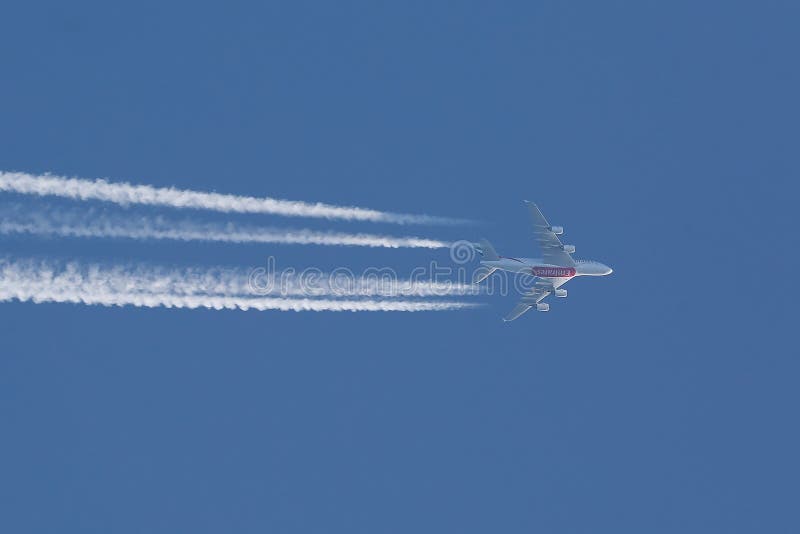
The cruising altitude of a Boeing 747, also known as the Queen of the Skies, typically ranges from 35,000 to 45,000 feet. This altitude allows the aircraft to operate at optimal performance, providing a smoother and more fuel-efficient flight experience for passengers. The cruising altitude is determined by a combination of factors, including air traffic control instructions, weather conditions, and the weight of the aircraft. They consider air traffic control instructions, weather conditions, aircraft weight, and performance data.
How Fast Does A Boeing 747 Fly? Takeoff & Landing Speed
Pilots continuously monitor and adjust the cruising altitude as necessary to ensure safe and efficient operations throughout the flight. The speed of the aircraft is primarily determined by engine power and the desired flight profile. However, flying at higher altitudes can result in smoother and more favorable wind conditions, which may indirectly affect the groundspeed or fuel efficiency of the aircraft. The cruising altitude of an aircraft is determined by factors such as air traffic control instructions, aircraft weight, and performance capabilities. If multiple aircraft are flying in the same airspace, they will generally be assigned different altitudes to ensure safe separation and efficient air traffic management. While a 747 can technically fly at various altitudes, it is usually restricted to a specific range.
Variants
The Boeing 747 utilizes jet streams, a natural occurrence, in addition to its strong engines. The swift, high-altitude air currents known as jet streams move all over the planet. Pilots may harness their energy to increase speed and fuel efficiency by maneuvering these strong air currents wisely. The airplane followed a route over Western Washington, where it underwent tests for basic handling qualities and engine performance. The airplane reached a cruising altitude of 17,000 feet (5,181 m) and a speed of up to 230 knots, or about 264 miles (426 km) per hour.
Can The Boeing 747 Fly On One Engine? - Simple Flying
Can The Boeing 747 Fly On One Engine?.
Posted: Sun, 05 Feb 2023 08:00:00 GMT [source]
Model summary
This is because a heavier aircraft should fly faster to generate the required lift at the most efficient lift coefficient. ECON speed will also be higher at higher altitudes because the density of the air is lower. The cruising altitude of an aircraft depends on its type, size, performance capabilities, and the specific flight conditions. Larger commercial aircraft like the 747 generally fly at higher cruising altitudes, while smaller regional aircraft may operate at lower altitudes. During takeoff and landing, a 747 flies at relatively lower altitudes compared to its cruising altitude. This is necessary to ensure proper acceleration during takeoff and a gradual descent for landing.
Its fuselage is stretched by 18 feet (5.5 m) to 250 feet (76 m), making it the longest airliner until the 777X, which first flew in 2020. While keeping its basic structure and sweep, the wing is thicker and deeper, holding more fuel, and wider with raked wingtips. The final aircraft, a 747-8F, was delivered to Atlas Air on January 31, 2023. The 747 is a four-engined jet aircraft, initially powered by Pratt & Whitney JT9D turbofan engines, then General Electric CF6 and Rolls-Royce RB211 engines for the original variants. With a ten-abreast economy seating, it typically accommodates 366 passengers in three travel classes.
The cabin is pressurized to a comfortable level, regardless of the cruising altitude. The pressurization system ensures that passengers experience a similar level of comfort and oxygen as they would at lower altitudes. The most recent design and materials are included in the GEnx to enhance performance, lower maintenance costs, and consume less fuel. Additionally, it also guarantees adherence to environmental rules both today and in the future. As the fastest wide-body airplane in the world, the Boeing 747 can take off at 160 kts (184 mph) and cruise at an astonishing 660 mph (Mach 0.86).
Aircraft on display
The Boeing 747 can increase its velocity by using these jet streams because of its capacity to fly at high altitudes. Pilots use meteorological data to meticulously arrange their itineraries so they can air travel on these unseen sky lanes. In addition to cutting down on journey time, this deliberate usage of jet streams increases the Boeing 747’s overall speed and efficiency. If a plane accidentally goes above its designated cruising altitude, the pilot will typically descend back to the correct altitude. This could be due to an autopilot or human error, or a temporary deviation for air traffic control instructions.
What happens if a 747 fails to reach its cruising altitude?

The descent to the correct altitude ensures that the aircraft remains within the designated airspace and follows the necessary flight regulations. In exceptional circumstances, a 747 may need to fly above its designated cruising altitude. This could be due to air traffic control instructions, avoiding severe weather, or other factors affecting the safety and efficiency of the flight. However, such deviations from the designated cruising altitude are typically temporary and occur on a case-by-case basis. Firstly, flying at higher altitudes allows for smoother flying conditions as it helps to avoid turbulence and bad weather. Secondly, the air at higher altitudes is less dense, which reduces drag and increases fuel efficiency.

In addition to being long and thin, the wing’s high aspect ratio increases lift and lowers fuel consumption. Plus, the wing comes with a supercritical airfoil, decreasing drag at high speeds by delaying the introduction of shock waves and having a downward slope at the trailing edge. Its aerodynamic design, particularly its wing, makes the 747 quicker than other aircraft. To minimize drag and increase speed, the 747’s huge wings have a 37.5-degree high sweep angle. For the optimum flying characteristics, Boeing has optimized the design.
The reason for the Boeing models’ ability to achieve its cruise speed majorly came from the GEnx engine. It is among the world’s most fuel-efficient, quietest, and cleanest turbofan engines. It can be adjusted due to changing weather conditions, air traffic control instructions, or other factors. Pilots continuously monitor the flight and communicate with air traffic controllers to optimize the flight path and deliver a safe and comfortable journey for all aboard.
What Limits The Height That An Aircraft Flies? - Simple Flying
What Limits The Height That An Aircraft Flies?.
Posted: Wed, 20 Jan 2021 08:00:00 GMT [source]
On average, it takes a Boeing 747 approximately 15 to 20 minutes to reach its cruising altitude, which is typically around 35,000 feet. As the aircraft consumes fuel, its weight decreases and the optimum altitude for fuel economy increases. For traffic control reasons it is usually necessary for an aircraft to stay at a cleared flight level.
Although this component is tuned for the 747-8, its foundation is the 787 Dreamliner engine. \With contemporary engines, it significantly outperforms several rivals. The Intercontinental began its flight test program March 20, 2011, taking off from Paine Field in Everett, WA. On Jan. 22, 1970, the first 747 entered service on Pan Am Airlines’ New York–London route. Unparalleled ViewsPick a seat on the outdoor deck or enjoy the view from the huge panoramic windows in our temperature-controlled indoor cabins.
Firstly, it allows the aircraft to avoid any potential obstacles such as mountains or tall buildings during takeoff. Secondly, it ensures the aircraft is in a stable and favorable air mass for smooth flying. Lastly, it maximizes fuel efficiency, as flying at higher altitudes reduces air resistance, resulting in lower fuel consumption.
The 747’s ability to fly at higher altitudes is made possible by its powerful engines and aerodynamic design. Yes, the weight of passengers, cargo, and fuel affects the ascent time of a 747. A heavier aircraft requires more thrust to climb, resulting in a longer ascent time. Airlines carefully calculate the weight and balance of the aircraft before each flight to ensure safe takeoff and efficient ascent. A fully loaded 747, with passengers, cargo, and fuel, will take longer to climb to its cruising altitude compared to an empty or lightly loaded aircraft. The added weight affects the performance of the aircraft, requiring more thrust and time for ascent.

No comments:
Post a Comment